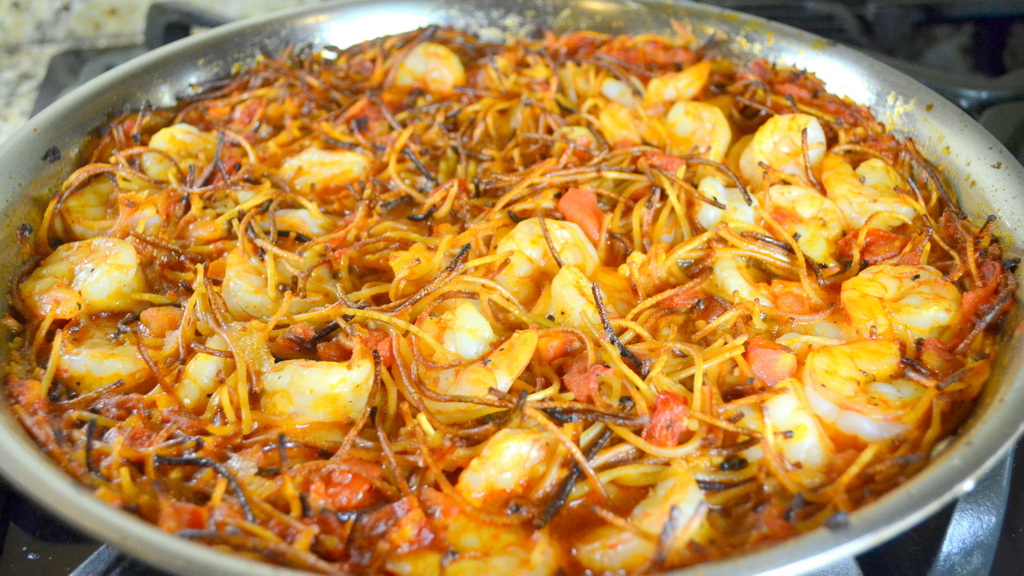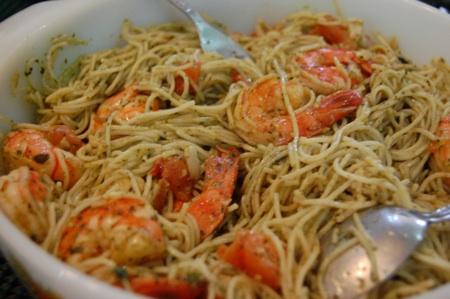| Source: Google.com.pk |
Pastas served with this dish are typically smaller shapes, such as penne. If using longer types of pasta, such as fettuccine, the vegetables are normally sliced in thin strips to match the shape of the noodles.Since primavera means spring, the vegetable choices should be the crisp new vegetables of spring.Pasta primavera with shrimp In 1975, New York chef Sirio Maccioni flew to the Canadian summer home of Italian baron Carlo Amato, called Shangri-La Ranch located on Robert's Island, Nova Scotia. Maccioni and his two top chefs began experimenting with game and fish, but eventually the baron and his guests wanted something different.Maccioni then mixed butter, cream, and cheese with vegetables and pasta together and brought the recipe back to New York.The fame of pasta primavera traces back to the New York restaurant Le Cirque, where it first appeared as an unlisted special before it was made famous through an 1977 article in the New York Times by Craig Claborne and Pierre Franey which included a recipe for the dish. The invention of the dish is contested. Le Cirque co-owner Serio Macchioni claimed that his wife Egidiana threw it together from ingredients on hand during a trip to Nova Scotia; Ed Giobbi, an amateur cook himself, claims to have shown Macchioni and Jean Vergnes (then chef at Le Cirque) a similar dish which Vergnes then slightly modified.All accounts agree that Vergnes refused to allow the dish to be prepared in the kitchen, so that the many requests for it had to be satisfied with a pot set up in a hallway. The combination of lightly cooked vegetables and pasta, which Claiborne and Franey hailed as "by far, the most talked-about dish in Manhattan", is widely recognized as one of the signature developments of American cuisine in the 1970s.
Shrimp And Pasta Recipes Recipe Of Pasta In Urdu By Chef Zakir In Hindi Salad With White Sauce In Urdu In Indian Style In Red Sauce Photos
Shrimp And Pasta Recipes Recipe Of Pasta In Urdu By Chef Zakir In Hindi Salad With White Sauce In Urdu In Indian Style In Red Sauce Photos Shrimp And Pasta Recipes Recipe Of Pasta In Urdu By Chef Zakir In Hindi Salad With White Sauce In Urdu In Indian Style In Red Sauce Photos Shrimp And Pasta Recipes Recipe Of Pasta In Urdu By Chef Zakir In Hindi Salad With White Sauce In Urdu In Indian Style In Red Sauce Photos Shrimp And Pasta Recipes Recipe Of Pasta In Urdu By Chef Zakir In Hindi Salad With White Sauce In Urdu In Indian Style In Red Sauce Photos Shrimp And Pasta Recipes Recipe Of Pasta In Urdu By Chef Zakir In Hindi Salad With White Sauce In Urdu In Indian Style In Red Sauce Photos Shrimp And Pasta Recipes Recipe Of Pasta In Urdu By Chef Zakir In Hindi Salad With White Sauce In Urdu In Indian Style In Red Sauce Photos Shrimp And Pasta Recipes Recipe Of Pasta In Urdu By Chef Zakir In Hindi Salad With White Sauce In Urdu In Indian Style In Red Sauce Photos Shrimp And Pasta Recipes Recipe Of Pasta In Urdu By Chef Zakir In Hindi Salad With White Sauce In Urdu In Indian Style In Red Sauce Photos Shrimp And Pasta Recipes Recipe Of Pasta In Urdu By Chef Zakir In Hindi Salad With White Sauce In Urdu In Indian Style In Red Sauce Photos Shrimp And Pasta Recipes Recipe Of Pasta In Urdu By Chef Zakir In Hindi Salad With White Sauce In Urdu In Indian Style In Red Sauce Photos
Shrimp And Pasta Recipes Recipe Of Pasta In Urdu By Chef Zakir In Hindi Salad With White Sauce In Urdu In Indian Style In Red Sauce Photos Shrimp And Pasta Recipes Recipe Of Pasta In Urdu By Chef Zakir In Hindi Salad With White Sauce In Urdu In Indian Style In Red Sauce Photos Shrimp And Pasta Recipes Recipe Of Pasta In Urdu By Chef Zakir In Hindi Salad With White Sauce In Urdu In Indian Style In Red Sauce Photos Shrimp And Pasta Recipes Recipe Of Pasta In Urdu By Chef Zakir In Hindi Salad With White Sauce In Urdu In Indian Style In Red Sauce Photos Shrimp And Pasta Recipes Recipe Of Pasta In Urdu By Chef Zakir In Hindi Salad With White Sauce In Urdu In Indian Style In Red Sauce Photos Shrimp And Pasta Recipes Recipe Of Pasta In Urdu By Chef Zakir In Hindi Salad With White Sauce In Urdu In Indian Style In Red Sauce Photos Shrimp And Pasta Recipes Recipe Of Pasta In Urdu By Chef Zakir In Hindi Salad With White Sauce In Urdu In Indian Style In Red Sauce Photos Shrimp And Pasta Recipes Recipe Of Pasta In Urdu By Chef Zakir In Hindi Salad With White Sauce In Urdu In Indian Style In Red Sauce Photos Shrimp And Pasta Recipes Recipe Of Pasta In Urdu By Chef Zakir In Hindi Salad With White Sauce In Urdu In Indian Style In Red Sauce Photos Shrimp And Pasta Recipes Recipe Of Pasta In Urdu By Chef Zakir In Hindi Salad With White Sauce In Urdu In Indian Style In Red Sauce Photos









HISTORY OF ALFREDO DI LELIO CREATOR IN 1908 OF “FETTUCCINE ALL’ALFREDO”, NOW SERVED BY HIS NEPHEW INES DI LELIO, AT THE RESTAURANT “IL VERO ALFREDO” – “ALFREDO DI ROMA” IN ROME, PIAZZA AUGUSTO IMPERATORE 30
ReplyDeleteWith reference of your article (for which I thank you), I have the pleasure to tell you the history of my grandfather Alfredo Di Lelio, who is the creator of “fettuccine all’Alfredo” in 1908 in the “trattoria” run by his mother Angelina in Rome, Piazza Rosa (Piazza disappeared in 1910 following the construction of the Galleria Colonna / Sordi). This “trattoria” of Piazza Rosa has become the “birthplace of fettuccine all’Alfredo”.
More specifically, as is well known to many people who love the “fettuccine all’Alfredo", this famous dish in the world was invented by Alfredo Di Lelio concerned about the lack of appetite of his wife Ines, who was pregnant with my father Armando (born February 26, 1908).
Alfredo di Lelio opened his restaurant “Alfredo” in 1914 in Rome and in 1943, during the war, he sold the restaurant to others outside his family.
In 1950 Alfredo Di Lelio decided to reopen with his son Armando his restaurant in Piazza Augusto Imperatore n.30 "Il Vero Alfredo" (“Alfredo di Roma”), whose fame in the world has been strengthened by his nephew Alfredo and that now managed by his nephew Ines, with the famous “gold cutlery” (fork and spoon gold) donated in 1927 by two well-known American actors Mary Pickford and Douglas Fairbanks (in gratitude for the hospitality).
See also the website of “Il Vero Alfredo” (with news about franchising).
I must clarify that other restaurants "Alfredo" in Rome do not belong to the family tradition of "Il Vero Alfredo – Alfredo di Roma" in Rome.
I inform you that the restaurant “Il Vero Alfredo –Alfredo di Roma” is in the registry of “Historic Shops of Excellence” of the City of Rome Capitale.
Best regards Ines Di Lelio